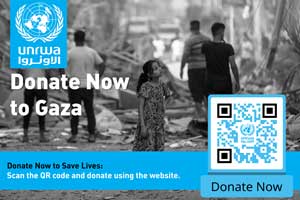You are here
Syria between internal collapse and external influence: A state no longer viable
May 04,2025 - Last updated at May 04,2025
Syria, never far from the frontlines of regional turmoil, returns once again through the gateway of sectarian conflict. Just two months ago, the Syrian coast witnessed horrifying massacres targeting the Alawite community. Today, the violence returns, this time targeting the Druze minority, further fueling fears of civil war and reinforcing the notion that Syria’s current structure is no longer viable.
Although several Arab countries moved swiftly to contain the Syrian crisis and gradually support the re-stabilisation of the regime, seeking to seize a historic opportunity to fill the power vacuum, it must be acknowledged that the interim leadership under Ahmad al-Shara’ (“al-Jolani”) has failed the fundamental test of statehood in under two months. Lofty rhetoric has not translated into real governance. The past five months can be summed up as a phase of declarations without implementation.
The shift In Syria is largely a product of regional dynamics, particularly the aftermath of the October 7 war, rather than the result of an organic national revolution. This means that Syria’s primary challenge remains internal: how to present a credible domestic solution, build national consensus, and construct a political system acceptable to all after years of geographical, political, and societal fragmentation.
When a single faction monopolizes power while claiming to represent the entirety of the Syrian people—or attempts to impose authority over the whole territory, it is effectively circumventing reality. This approach naturally leads, and will inevitably continue to lead, to events that exacerbate internal strife and render sustainable coexistence increasingly unattainable.
While internal challenges dominate, regional dynamics undeniably play a decisive role in shaping Syria’s internal affairs. Since the fall of the central government, Israel has acted decisively to reshape Syria’s military and security landscape. It has systematically dismantled Syria’s military infrastructure and made efforts to prevent any possibility of its rehabilitation. Israel has also maintained a military presence in strategic parts of Syria, which it considers essential to its future security doctrine. This de facto reality, imposed by force, has reshaped Syria’s geography, but it will inevitably also impact its political and societal map.
Israeli measures have introduced a new layer to Syria’s already complex equation, and have reopened channels of internal and regional realignment. In Syria’s case, the Israeli role is arguably the most dominant among external actors. Since the October 7 attack, Israel has aggressively pursued military operations in any front it considers a threat.
Israel’s assertive strategy in Syria, combined with the interim leadership’s failure to present a viable national solution, has pushed many Syrian communities to seek external alliances for protection and survival. The so-called interim regime has overused the mechanism of forming investigative committees, tools that quickly lose relevance with each new outbreak of violence. Moreover, repeated references to “uncontrollable elements” only further erode the regime’s image and do not absolve it of responsibility.
From a pragmatic perspective, any genuine solution to the Syrian crisis must include substantive, innovative proposals. At the same time, such a solution must affirm the principles of plurality and grant diverse Syrian communities some measure of autonomy. Before internal divisions deepen beyond repair, Syria needs a serious political framework, one that approximates a decentralized system—preserving Syria’s unity on a macro level while allowing various groups to manage their own daily affairs and safeguard their cultural identities.











Add new comment